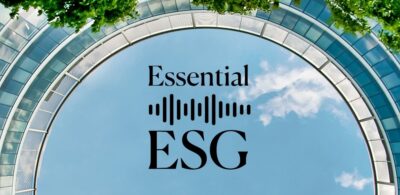- Who we are
-
Capabilities
- Arbitration
- Banking and Finance
- Board Advisory
- Class Actions
- Competition
- Corporate Commercial
-
Employment and Labour
- Diversity and Discrimination
- Employment Contracts, Policies and Procedures
- Employment Disputes
- Executive Remuneration, Governance, Performance and Termination
- Labour Strategies, Industrial Relations and Trade Unions
- Workplace Health and Safety
- Workplace Investigations
- Team Moves and Injunctions
- Training
- Energy and Natural Resources
- Environment and Planning
-
Financial Sponsors
- Fund Formation and Management
- Pension and Sovereign Wealth Funds
- Financial Services Regulation and Superannuation
- Joint Ventures
- Public M&A
- Private M&A
- Private Equity
- Venture Capital Markets
- Special Situations Lending and Investing
- Capital Transactions and Funds
- Infrastructure Capital Transactions
- Construction and Infrastructure Projects
- Public Private Partnerships
- Tax
- Government
-
Intellectual Property
- Advertising, Marketing and Trade Promotions
- Commercialisation and Licensing
- Confidential Information
- Copyright and Designs
- Domain Name Disputes
- Franchising
- Geographical Indications
- Intellectual Property and Patent Litigation
- Misleading Conduct and Passing Off
- Patents
- Therapeutic Goods Regulation and Advertising
- Trade Marks and Branding
- Food Law
-
Investigations
- Whistleblowers and Internal Investigations
- Regulatory Investigations
- Antibribery and Corruption
- White Collar Crime and Fraud
- Royal Commissions, Inquiries and Prosecutions
- Reputation Risk Advisory
- Regulatory Compliance and Anti-Money Laundering
- Forensic Technology Investigations
- Ethics and Compliance
- Trade Investigations
- Workplace Investigations
- Litigation
- M&A and Capital Markets
- Papua New Guinea
- Projects and Construction
- Real Estate
- Responsible Business and ESG
- Restructuring, Insolvency and Special Situations
- Tax
- Technology, Media and Telecommunications
- Insights
- People
- Careers
Insights
Thoughtful perspectives
Featured
article
Sweeping reforms to Australia’s merger control rules announced
The Australian Government has announced sweeping reforms to Australia’s merger rules that will commence in January 2026.
Read More-
Article
Cost of living takes centre-stage: ACCC releases its 2024-25 priorities
-
Podcast
Essential ESG: Episode 18 – Responsible business in conflict-affected and high-risk areas
-
Podcast
Essential ESG: Episode 17 – Reforms to the Environment Protection and Biodiversity Conservation Act
-
Article
Seven years in the making: Australia’s Foreign Bribery Law amendments pass parliament
-
Article
TGIF 1 March 2024 – Federal Court does away with formal proof of debt
-
Report
Australian cyber security trends: February 2024
-
Article
Privacy changes: new compliance obligations for Queensland Government agencies
-
Article
Non-compete clauses in employment contracts – is time up?
-
Article
Five trends shaping environmental regulatory reform in 2024
-
Article
TGIF 16 February 2024 – Court finds cross-collateral mortgage vulnerable to challenge by liquidator
-
Article
Infrastructure and renewable energy in 2024: key trends to watch
-
Article
High-water mark: will an amended Privacy Act meet the bar set by the EU GDPR? Part two
-
Article
High-water mark: will an amended Privacy Act meet the bar set by the EU GDPR? Part one
-
Article
TGIF 2 February 2024 – Complex but critical: Administrators given time to decide on convoluted leasing arrangements
-
Article
Mandatory climate-related financial disclosure: government releases draft framework
-
Article
A highly anticipated judgement and possible reforms: key developments in franchising in 2023




